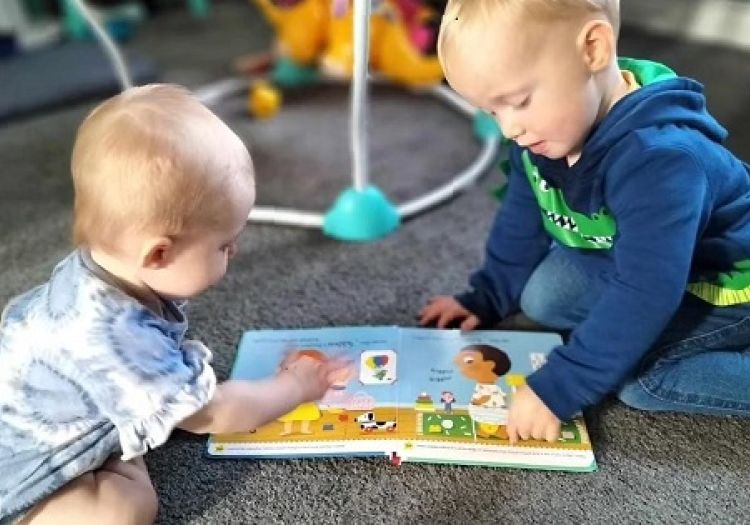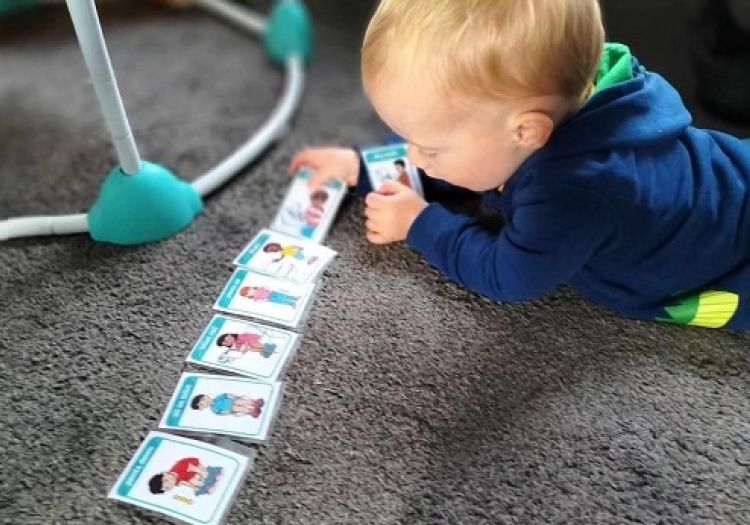Toilet Training
A blog to support toilet training!
As a team we have been reflecting on the journey of toilet training and with the weather warming up and holidays approaching many parents and carers feel like this is a suitable time to begin this process, but how do you know your child is ready for getting rid of nappies?
We usually recommend around 18 months for a child to begin the toilet training journey, however, it is different for every child, they will control their bladder and bowels when they are physically ready and when they want to be dry and clean.
When a child is around 1 most babies will have stopped pooing at night, by 2 some children will begin to be dry during the day but this might be early, by 3 most children are dry most days but then they may still have the odd accident but by age 4 most children will be dry throughout the day.
During the night this will sometimes take longer for children to stay dry, however sometimes children may still wet the bed when they are older.
When?
Usually children will begin to toilet train when they are ready, if they are not ready you will not be able to force them, from around 18months or just before it is important to start introducing the children to the toilet or the potty so that they know what it is for.
It is good to begin to toilet train when there are no distractions or no big changes to your child or family’s routine, it is important to stay consistent.
It is often helpful if this is done during a holiday period when you are at home together for a long period of time or a long weekend, it is usually also best during the warmer weather where the child can be left with little clothing on.
If you are going out make sure that you take a potty with you so that they know they can go to the toilet when needed, and make sure that everyone is aware that the child is toilet training.
Signs to look out for:
- Knowing that they have wet or dirty nappy.
- Knowing that they are having a wee and may tell you what they are doing
- The gap between wetting is at least an hour
- They show that they are needing to go to the toilet by fidgeting or going somewhere quiet or hidden.
- They might say that they need to have a wee or say in advance.
Top Tips
When you change your child’s nappy talk to them about what is in it, whether it was wet or soiled, sometimes if they have done a solid poo you might also want to flush it down the toilet so that they can see what happens when you flush the toilet. Also get into the routine of hand washing after nappy changing ready for washing hands after going to the toilet.
Encourage your child to sit on the toilet/potty after having their nappy changed so that they get used to the feeling. It is also helpful to get them to sit on the toilet/potty after meal times as digesting food can lead to the urge to do a poo.
Having a toy or a book near-by can help your child to stay sat on the toilet/potty.
There a lot of books about toilet training, one that we recommend is the big steps ‘no more nappies’, Cowell and Salcedo wrote one called Poo Poo Bum Bum Wee Wee: A rhyming toilet training book, there is also Pirate Pete and Princess Polly, and lots more!
If you find that your child usually does a poo at the same time each day try to leave their nappy off and encourage them to use the potty/toilet, however if they become upset over this then please do not worry, just try again another time!
It is often easier for children to get the hang of going for a wee first, it is always more difficult for them to get used to doing a poo.
It does take time, often it is found that girls get on better than boys, however, it is important that you as the adult stays calm, don’t get angry or make a fuss if they have an accident as the child will pick up on this. It is easier to have loose fitting clothes that can easily be pulled on and off. It is also good for your child to know what it feels like to be wet, so that they get used to the feeling of having an accident and that it is uncomfortable and not nice.
Before you begin potty training we always suggest that you make sure that your child can take off and put on their trousers on their own, so it is easier for them to pull their trousers up and down when they need to go.
For some children the use of reward charts and sticker charts work to see that if they are competently using the potty/toilet they get rewarded for this, but for some children this does not work.
The website ERIC has some really useful information and top tips on it for toilet training, one part in particular that we really like is the ‘ let’s go potty 3 step approach’
3 step approach to potty training
Learning how to use the potty independently and stopping wearing nappies is a big milestone for your child. There are lots of new and exciting skills for them to learn with your help. To make this process easier for you both, follow our evidence-based Let's Go Potty approach.
Step 1: PREPARATION: Spending time preparing your child in advance of taking their nappy away is the best way to help them move on to the next step
Step 2: PRACTICE: Teaching your child how to use a potty and feel comfortable around wee and poo is a great way to introduce the next step.
Step 3: STOPPING USING NAPPIES: Thanks to plenty of preparation and practice, your child has gained new skills and confidence. They are now ready for the last step which is to stop wearing nappies.
The following link takes you to their website where there are lots of other hints and tips to support your child through potty training!
https://eric.org.uk/potty-training/
As a nursery we are here to support in whatever way we can, after nappy changes we can start introducing the toilet/potty for them to get used to the feeling of sitting on it, especially as nursery where this can be a little more distracting, however, it can also be helpful if their friends are already toilet trained as they can sit with them. We have books on toileting and also a parent pack on toilet training that you are welcome to borrow.
The most important tip we can give you is wait until they are ready, there is no pressure, every child is different and they will do it in their own time!



